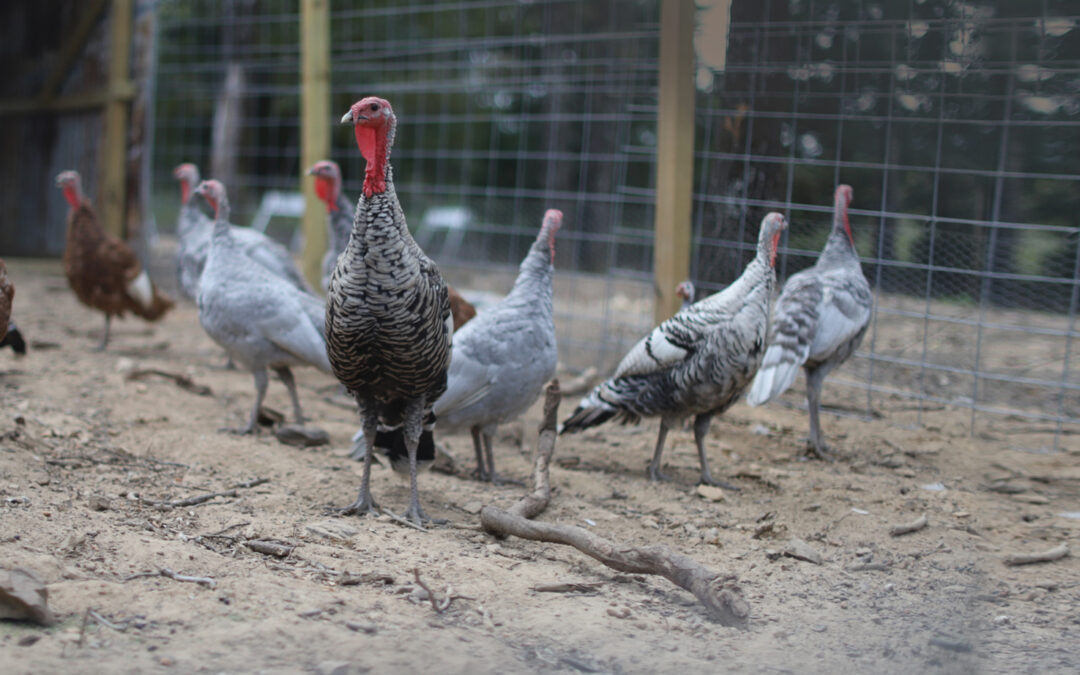Heritage Turkeys
As discussed in my previous article, there are a few things to keep in mind when looking at Heritage turkeys. On one hand, they are slower to mature than production birds. They are typically table ready around 26-28 weeks, and hens begin laying around 9 months of age. Heritage turkey hens lay a variety of shades of cream to tan eggs with beautiful speckles. Inherent vigor, foraging abilities, natural reproduction, and delicious meat are all positive characteristics associated with Heritage turkeys.
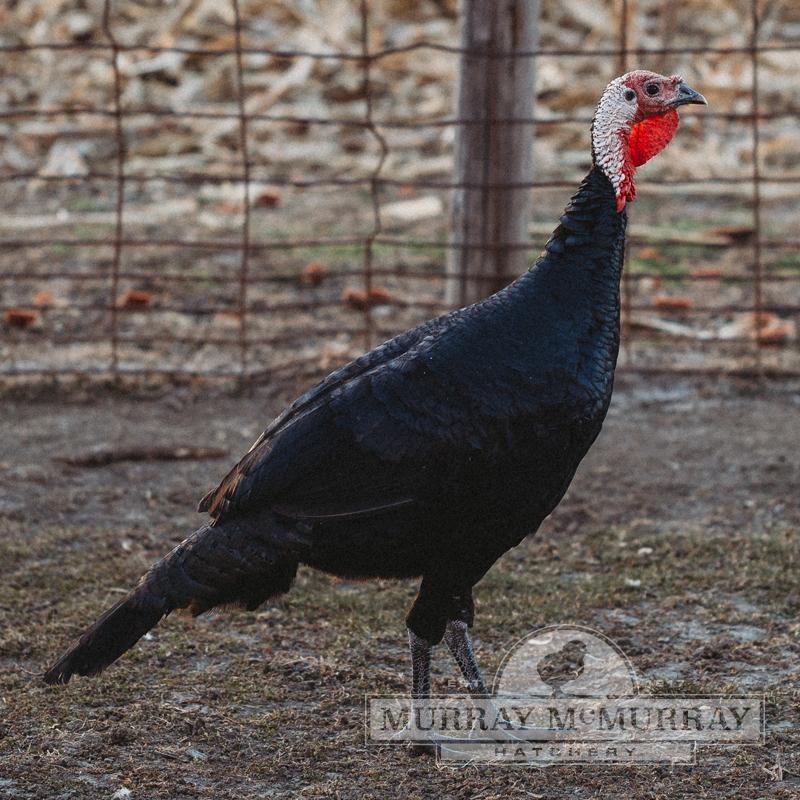
BLACK SPANISH TURKEY
HERITAGE TURKEY VARIETY
The Black turkey, also known as Norfolk Black, was brought to the Americas by early European settlers. Their Black turkeys were crossed with Eastern Wild Turkeys, which created the American version of the Black Spanish.
This variety has experienced great popularity on the East coast, particularly in the states of Maryland and Virginia. Their calm behavior, fast weight gain, and rapid growth are all very desirable traits. The Black is currently listed as threatened on the Livestock Conservancy’s Priority List.
SIZE: Toms can weigh up to 23 pounds, and hens weigh around 14 pounds.
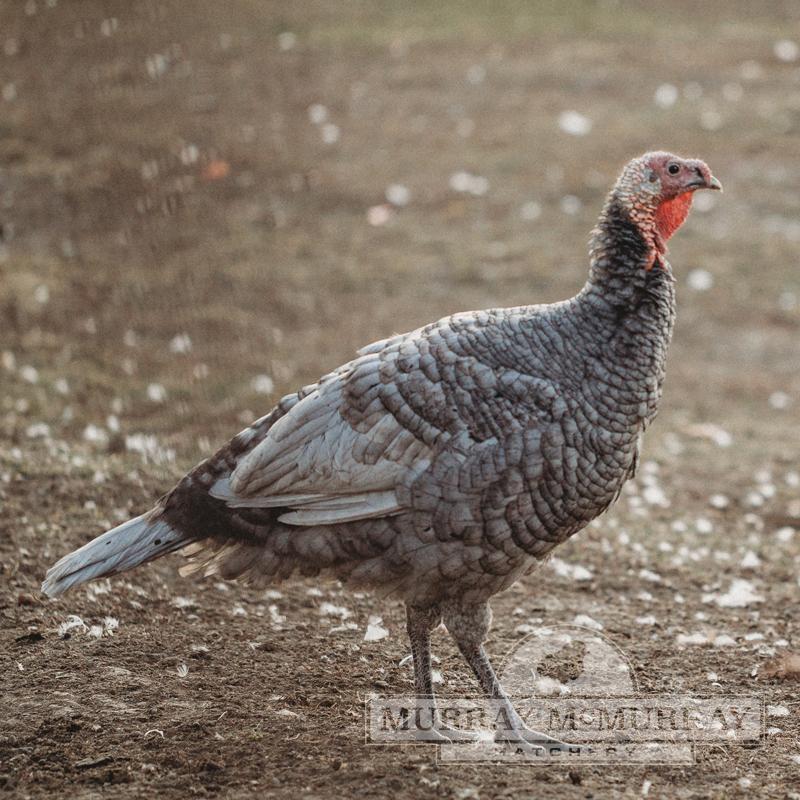
BLUE SLATE TURKEY
HERITAGE TURKEY VARIETY
The Blue Slate originated in Mexico. Variations include solid blue, solid black, and blue flecked. This is a medium sized bird that has been praised for a good rate of gain. The Slate variety was recognized by APA in 1874, and is listed as threatened by the Livestock Conservancy. Even though the Blue Slate has been in existence for hundreds of years, they are still quite rare.
SIZE: Toms weigh in at 23 to 27 pounds, and the hens range from 14 to 18 pounds.
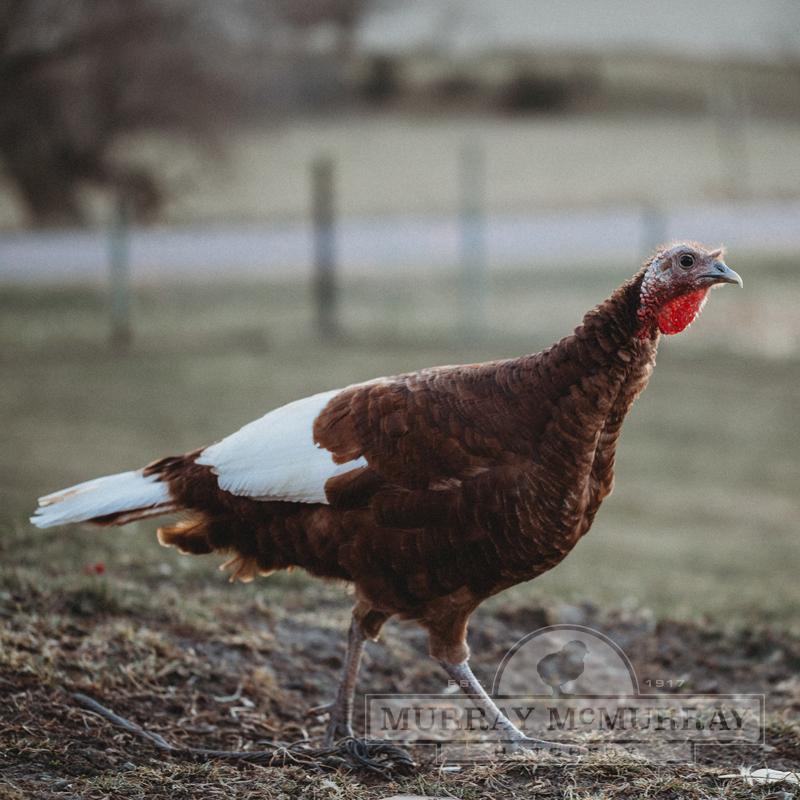
BOURBON RED TURKEY
HERITAGE TURKEY VARIETY
This deep chestnut colored bird was developed in Kentucky. The Bourbon Red is a striking turkey and was previously a major breed in commercial operations. As new poultry breeders seek out healthy birds capable of reproducing naturally, Bourbon Reds are becoming increasingly popular once again. The Bourbon Red is slightly smaller in size than other Heritage turkeys, making them an excellent choice for those who are raising their flocks in a smaller space.
SIZE: Toms usually weigh around 23 pounds, and hens are close to 14 pounds.
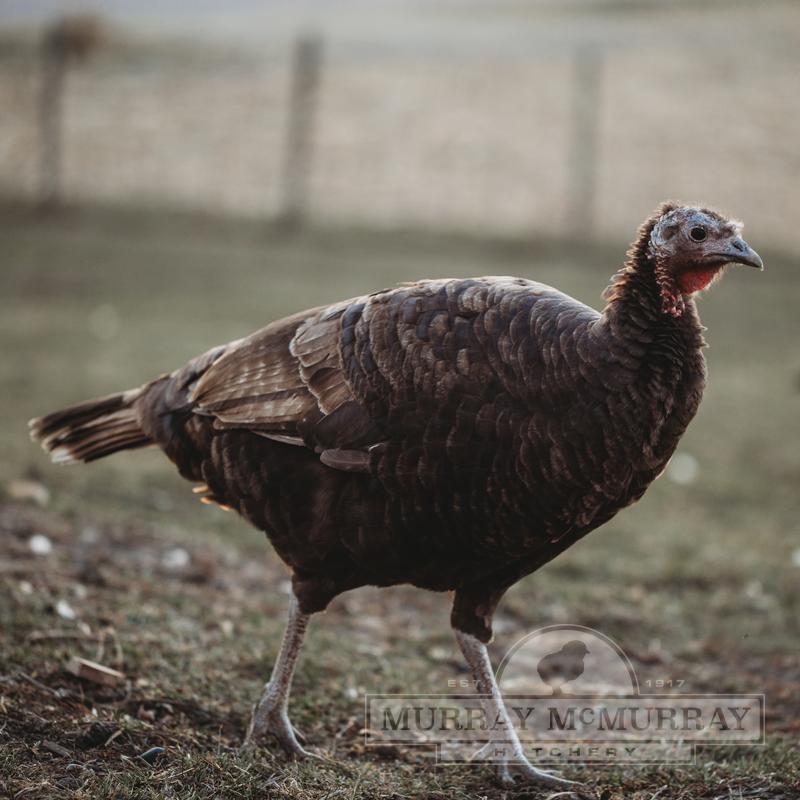
Chocolate TURKEY
HERITAGE TURKEY VARIETY
Chocolate turkeys were a common sight in the pre-Civil War South. Unfortunately, their population dwindled due to over-consumption and loss of breeders during the war. Therefore, the Chocolate is now listed as watch by the Livestock Conservancy.
These turkeys have solid milk chocolate coloring on their feathers, legs, and feet. Proponents of the Chocolates claim they are very gentle. In addition, despite their dark feathers, these turkeys reportedly dress quite clean.
SIZE: This variety is rather large in comparison to some Heritage breeds. Toms can weigh up to 33 pounds, and hens typically weigh close to 18 pounds.
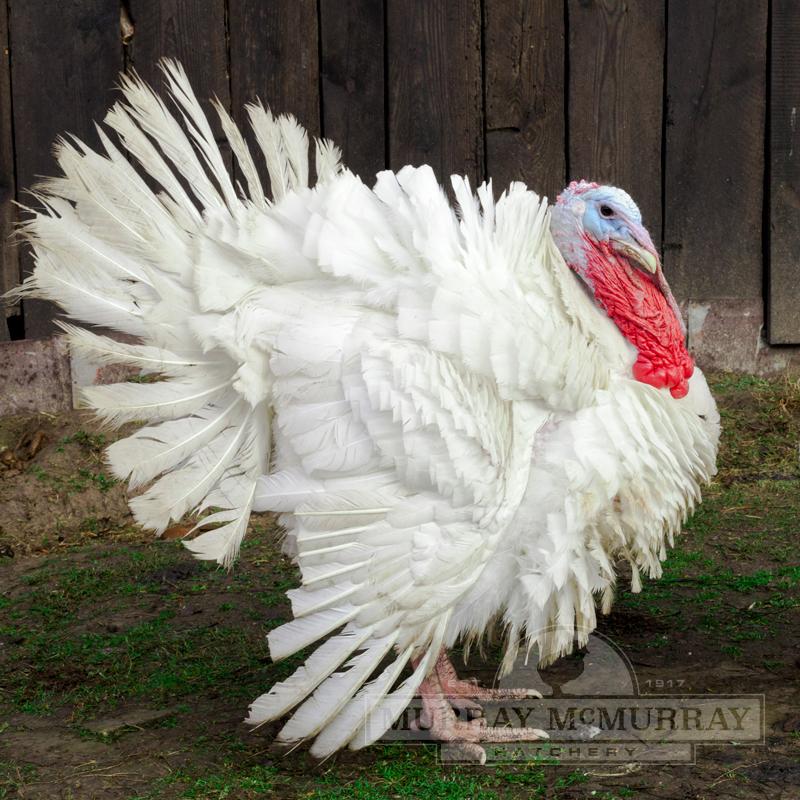
Midget White TURKEY
HERITAGE TURKEY VARIETY
The Heritage Midget White Turkey is the smallest domesticated turkey, known for its manageable size and delicious meat. The breed resembles the Broad Breasted White, although much smaller at maturity. The Midge White is rare, and is on the Livestock Conservancy watch list.
SIZE: Toms weigh close to 20 pounds, and hens weigh in around 10-12 pounds.
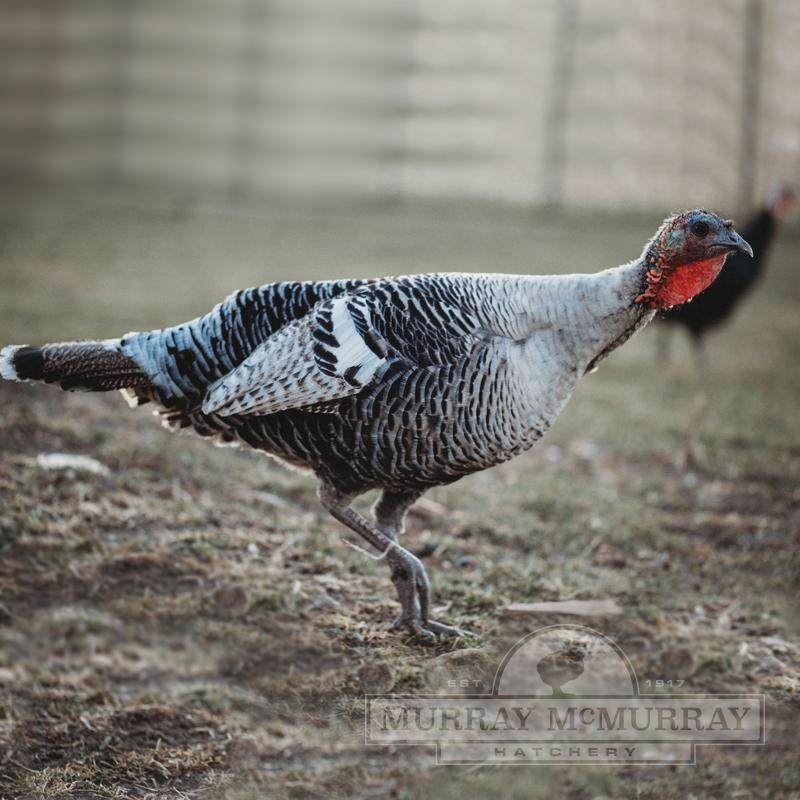
Narrangansett TURKEY
HERITAGE TURKEY VARIETY
The Narragansett was developed from the Norfolk Black, which was brought over from Europe. Narragansetts were first bred in Rhode Island, and were recognized early on by the APA.
The Narragansett was a dominant breed in the 1800s due to their foraging ability, as their weight gain required very little extra grain. They were also known for their good mothering abilities, calm behavior, and delicious meat.
As with other Heritage turkeys, their early popularity declined with the development and marketing of broad breasted breeds. They eventually became rare and endangered. Thankfully, recent interest in Heritage turkeys has sparked an increase in the Narragansett breed.
SIZE: Toms weigh an average of 22 to 23 pounds, and hens weigh an average of 14 pounds.
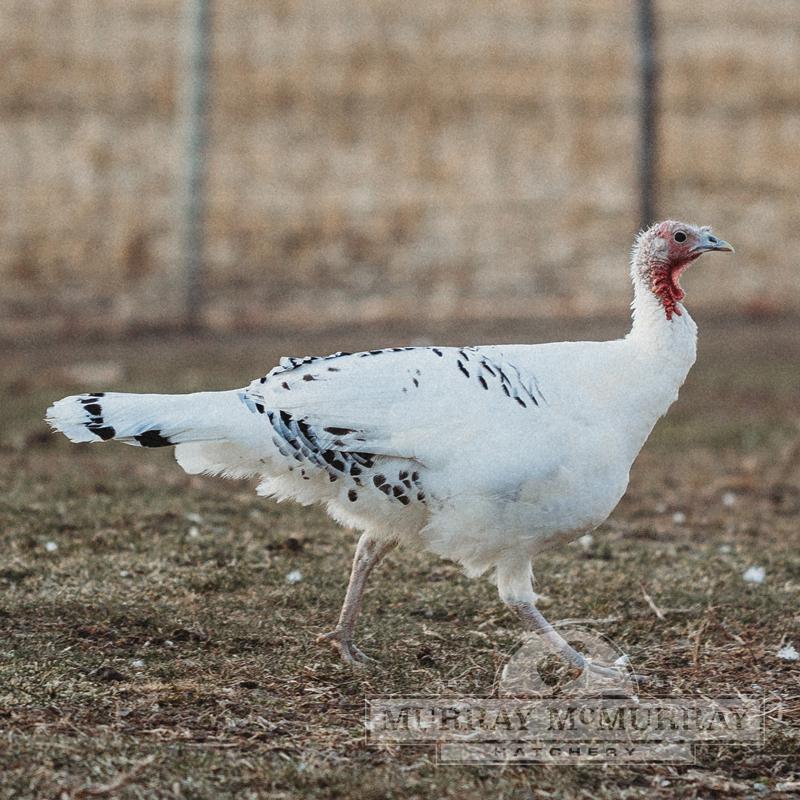
Royal Palm TURKEY
HERITAGE TURKEY VARIETY
The Royal Palm is one of the newer entries on the APA Heritage breed list, and is a true show stopper. The Royal Palm turkey breed was perfected through years of careful genetic selection. Their white feathers with dark markings and bands give them a striking appearance. Due to its smaller size, the Royal Palm is likely to fly. While the they can be raised for meat, most fanciers keep them for pets, exhibition, and insect control.
SIZE: Royal Palms are a relatively small Heritage bird. Toms weigh 16 pounds, and hens are approximately 10-12 pounds when mature.
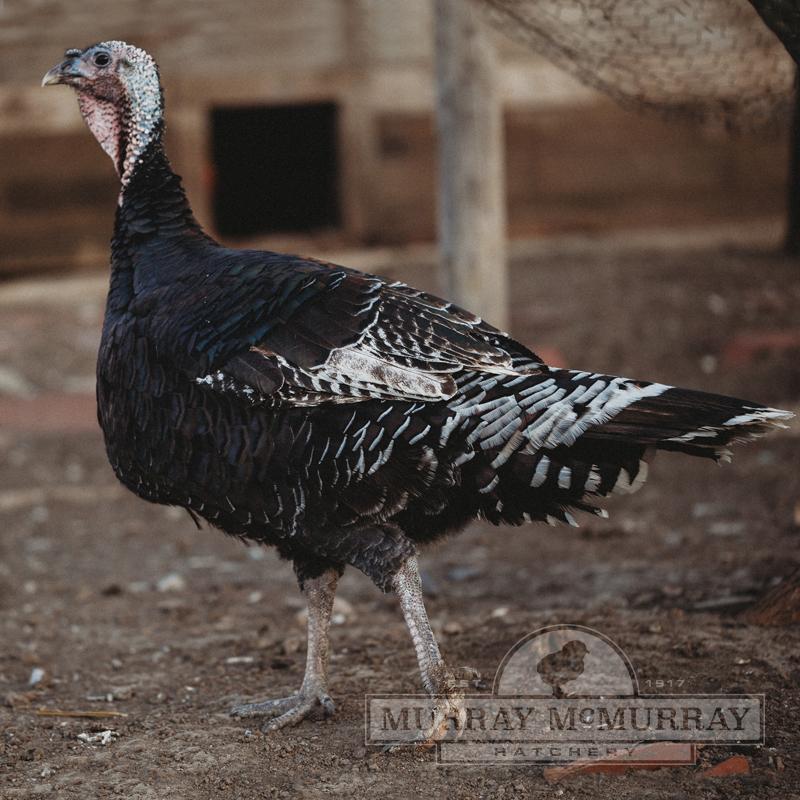
Standard Bronze TURKEY
HERITAGE TURKEY VARIETY
Early European settlers crossed their domestic turkeys with the native Eastern Wild Turkey, resulting in the Standard Bronze. As often happens, hybrid vigor, disease resistance, and a natural foraging ability made the Standard Bronze popular for many generations. This Standard Bronze was standardized in the 1800s, and continued to be popular with turkey breeders until the Broad Breasted Bronze was developed from them.
SIZE: Toms average 25 pounds, hens come in at around 16 pounds.
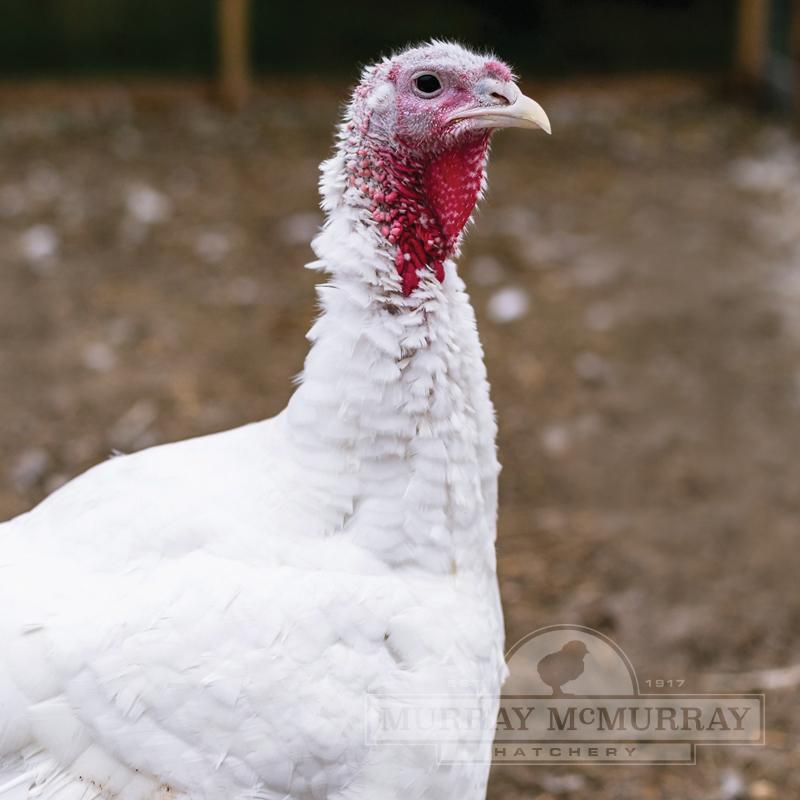
White Holland TURKEY
HERITAGE TURKEY VARIETY
The White Holland turkey has an interesting backstory. White is a recessive trait in turkeys, and white feathers are actually a mutation, showing the absence of color. Breeders selectively bred Bronze turkeys to create the White Holland.
In the 1950s, commercial breeders began crossing White Hollands with Broad Breasted Bronze turkeys to create the Broad Breasted White turkey. Often confused with the Broad Breasted White, the true White Holland is a Heritage variety.
SIZE: Toms weigh about 25 pounds, and hens are typically close to 16 pounds.
Production Turkeys
While production turkeys do not have the same disease resistance, natural reproduction capabilities, and flavorful meat as Heritage turkeys, they do have some strong selling points. They are typically ready to butcher within 16-22 weeks, depending on the feeding program, environment, and overall health of the flock. Production turkeys can grow to be quite large, putting a lot of meat in the freezer and on the table. While we generally think of raising only Heritage birds using sustainable methods, more and more people are successfully raising production turkeys on pasture as well.
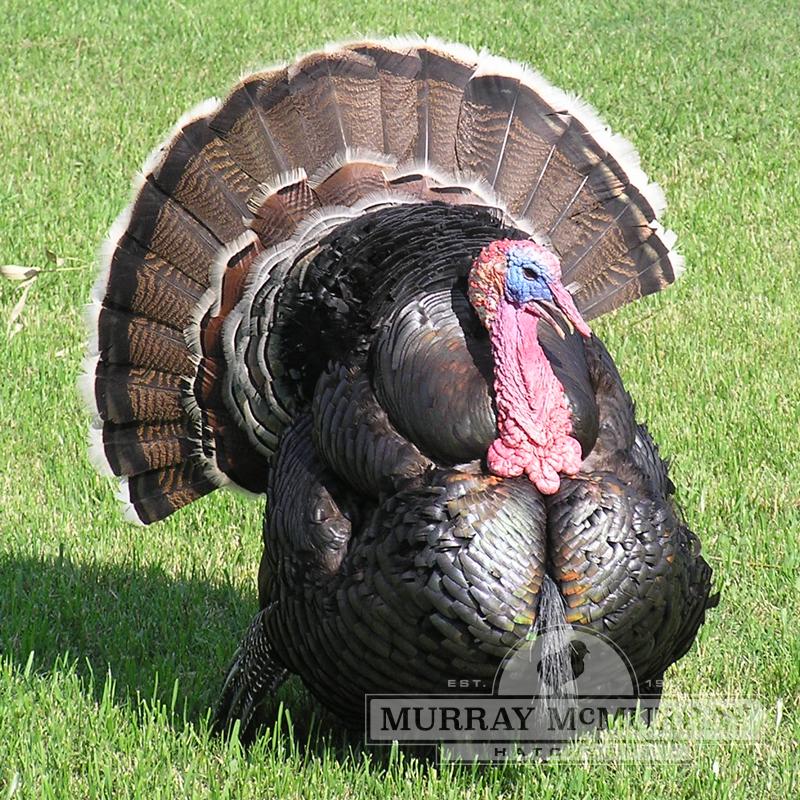
BROAD-BREASTED BRONZE TURKEY
production TURKEY VARIETY
The Broad Breasted Bronze Turkey is one of the largest and heaviest turkey varieties. They are known for their excellent feed conversion and are very fast-growing, making them an excellent meat bird. The Broad-Breasted Bronze is one of the most popular commercial meat varieties, though their dark pin feathers make them a bit more difficult to dress than other breeds.
SIZE: Toms can weigh in at about 38 pounds, while hens easily reach 22 pounds.
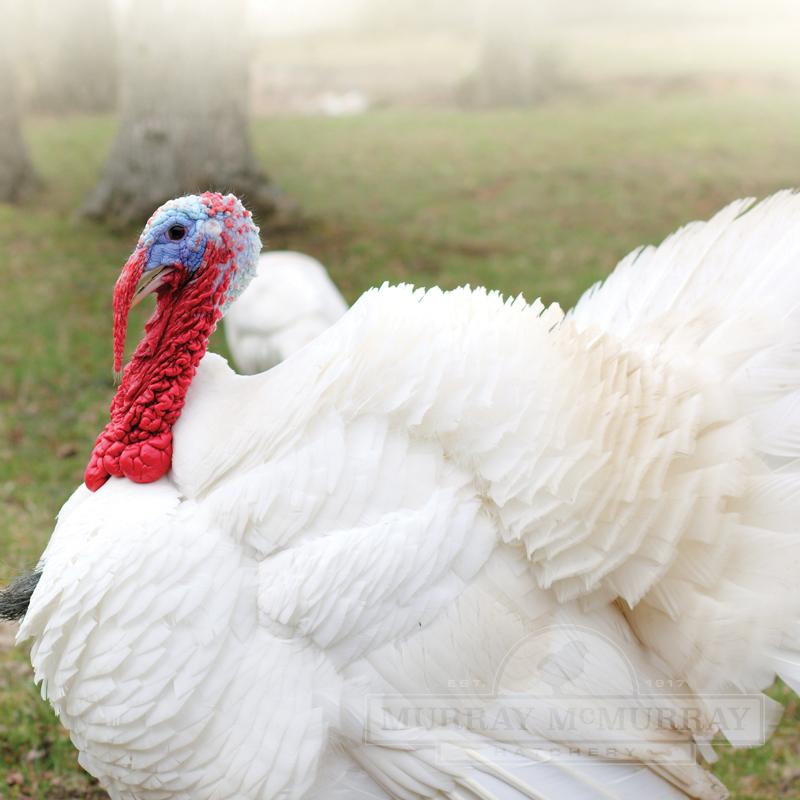
BROAD-BREASTED Giant White TURKEY
production TURKEY VARIETY
Giant White turkeys are an incredibly popular production birds. Their size is remarkable, and their white feathers make them easy to dress. Giant Whites are a classic table turkey thanks to their rapid growth and good feed conversion.
SIZE: Toms often weigh as much as 45 pounds, while hens can reach 25 pounds.
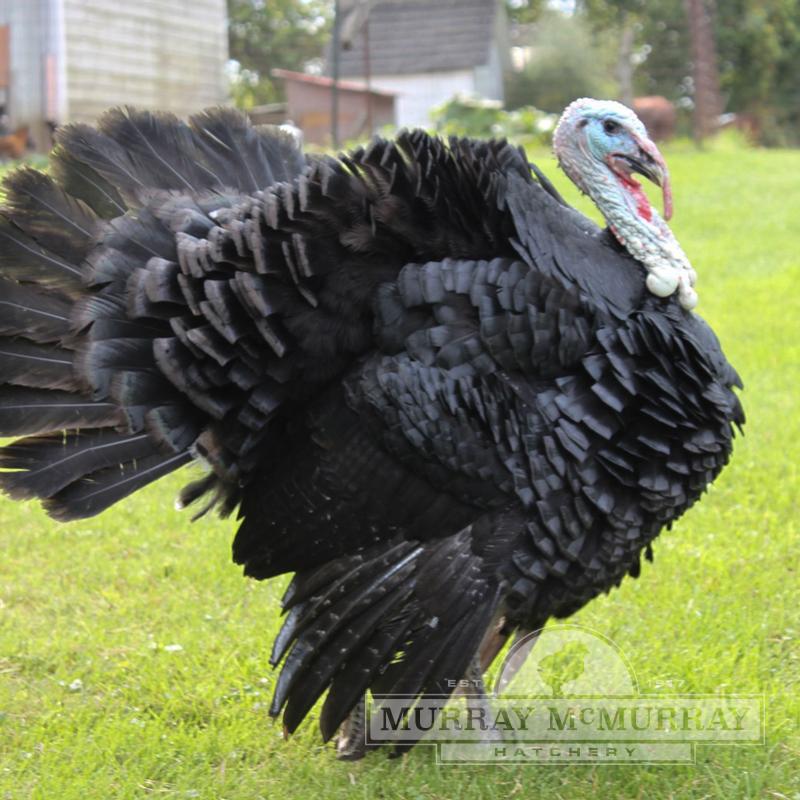
MURRAY'S BROAD-BREASTED ARTISAN BLACK TURKEY
production TURKEY VARIETY
Murray’s Broad Breasted Artisan Black Turkey is a unique and lesser-known variety that combines desirable production characteristics with classic Heritage traits. The Artisan Black is a bit smaller and slower growing than traditional production varieties, but will still reach the table well before their Heritage counterparts. Their delicious meat sets them apart from other production birds, and they are known for thriving in a free range setting.
SIZE: Toms weigh in close 20 pounds at 20 weeks, and 11-12 pounds at 16 weeks for hens.
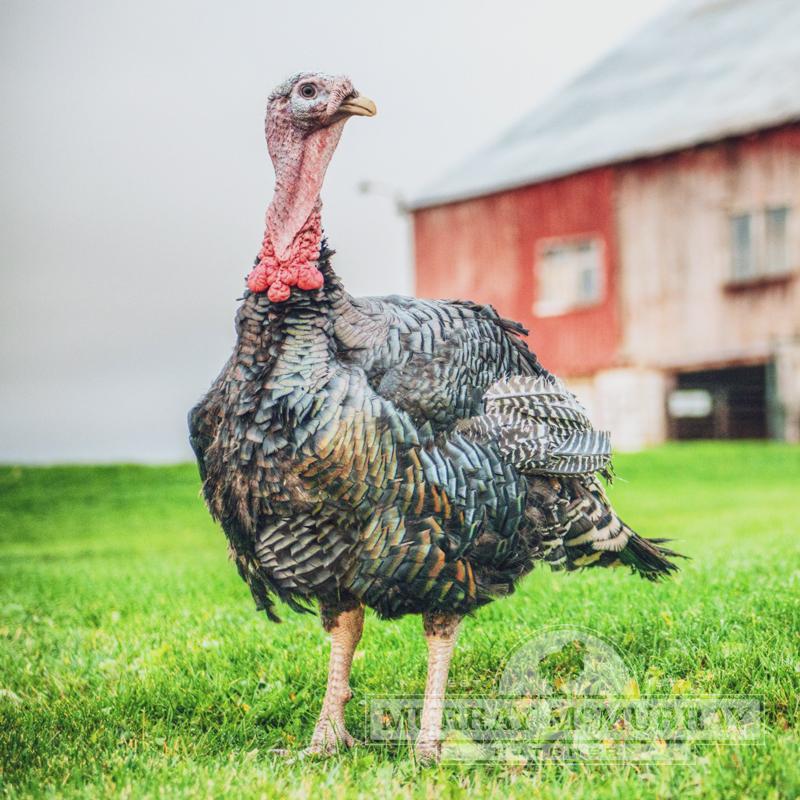
MURRAY'S BROAD-BREASTED BRONZE TURKEY
production TURKEY VARIETY
Murray’s Broad Breasted Bronze is the crown jewel of premium, broad-breasted turkeys. This variety is one of the largest, and heaviest, turkey varieties in North America. Often referred to as the quintessential Thanksgiving turkey, these immense birds can measure up to four feet in length with a six-foot wing span.
SIZE: Toms weigh in close 20 pounds at 20 weeks, and 11-12 pounds at 16 weeks for hens.
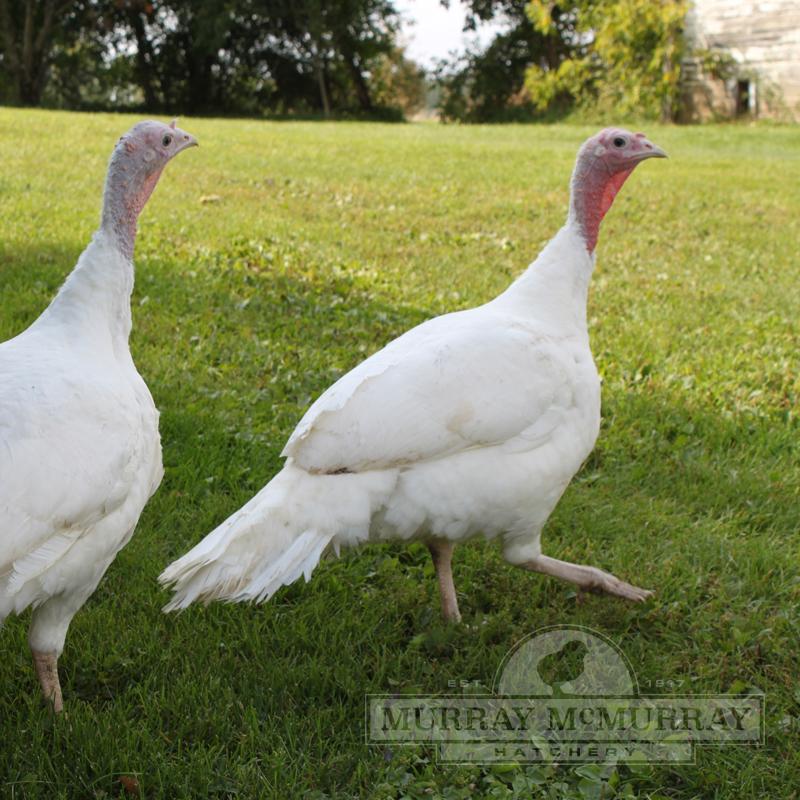
MURRAY'S BROAD-BREASTED Giant White TURKEY
production TURKEY VARIETY
Murray’s Giant White Turkey is one of the largest and most common broad breasted production varieties grown in the United States. They are known for their rapid growth and white feathers, which make them easy to dress. This breed is an excellent choice for those who want to raise and sell classic table birds.
SIZE: Mature toms can weigh up to 45 pounds around 24 weeks, and hens will reach 25 pounds at 20 weeks.
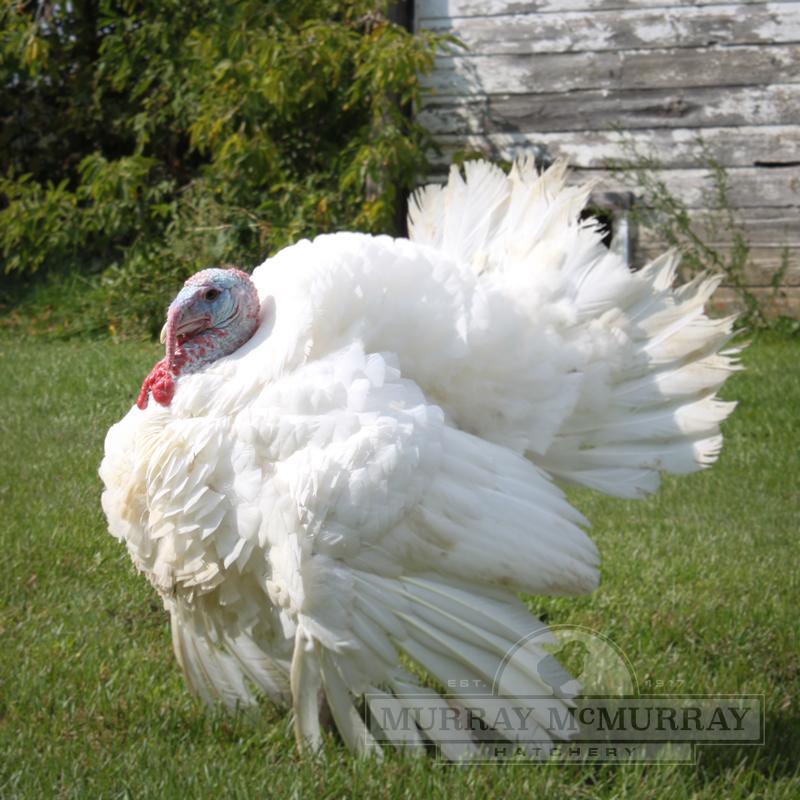
MURRAY'S Midget White TURKEY
production BREED
Murray’s Midget White offers the benefits of raising production turkeys in a much smaller bird. This production turkey has the same great meat quality as its larger counterparts, but their smaller size means they are easier to raise and process. Murray’s Midget White is ideal for both homesteaders and backyard keepers.
SiZE: Toms average 26 pounds at 18 weeks, and hens will be close to 16 pounds at 16 weeks.
No matter which direction you choose to go with your turkeys, keep in mind that they all require similar care. Appropriate food, fresh water, safe foraging opportunities, clean living conditions, and a suitable shelter are all basic requirements. Whether you raise two at a time for your holiday meals, keep them as pets or show birds, or begin a profitable breeding operation, turkeys have a way of endearing themselves to you and becoming a rewarding part of your homestead, farm, or backyard.
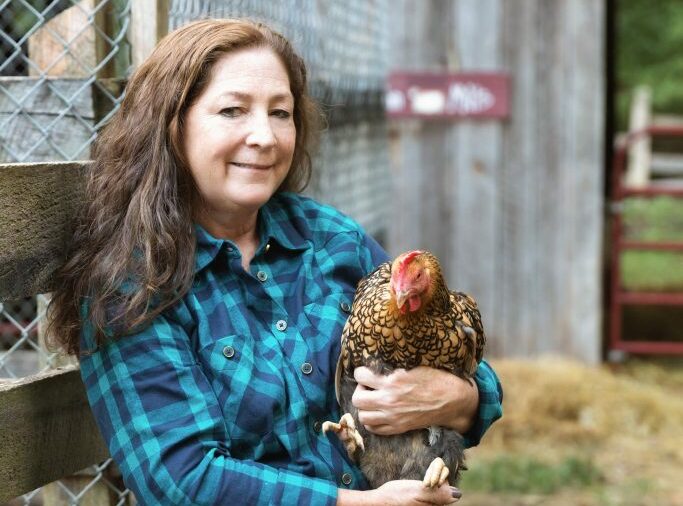
Feature photo courtesy of Roots and Refuge Farm.

